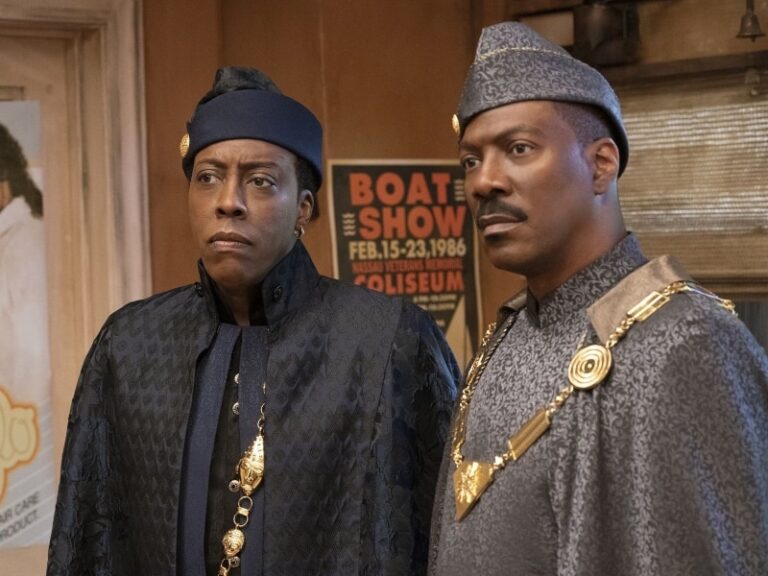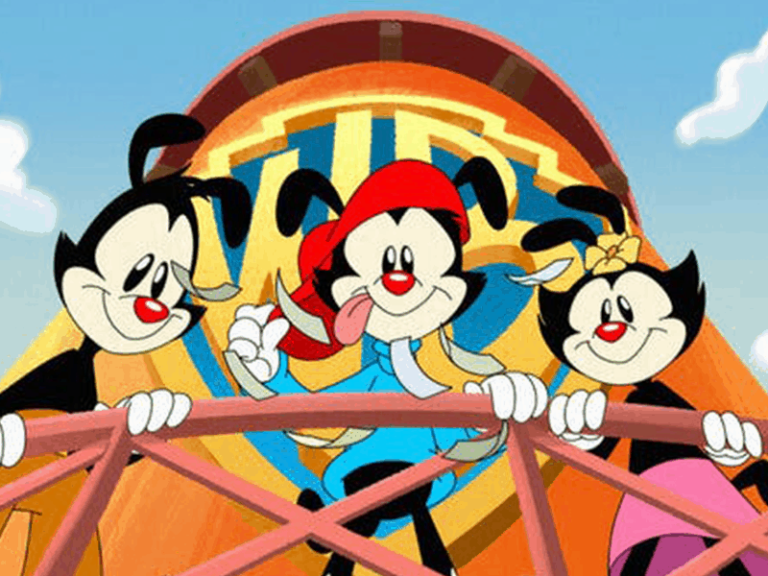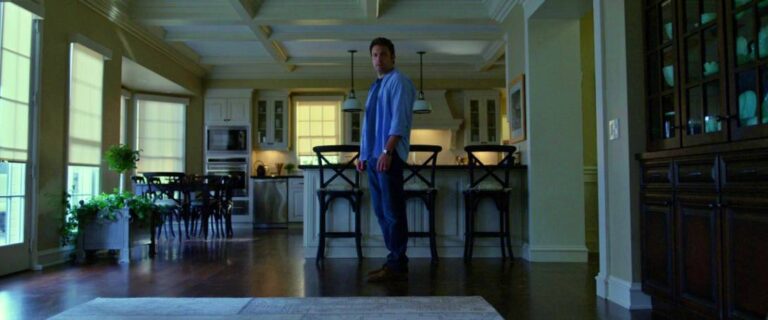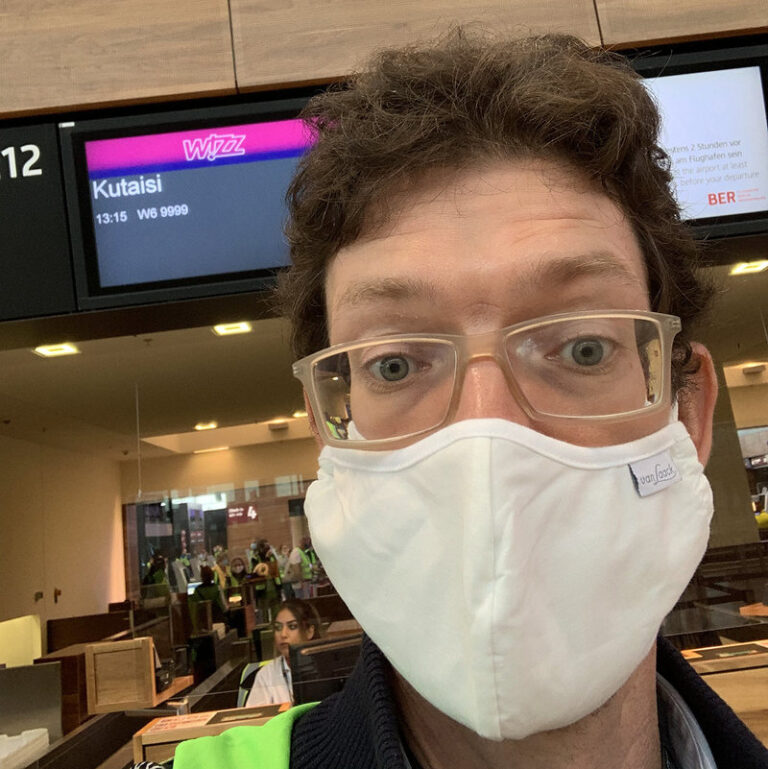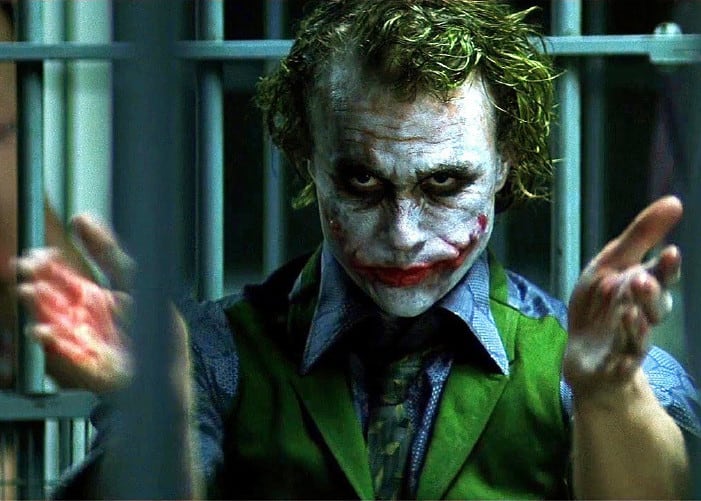Fantasia Film Festival 2020: Interview with Amelia Moses of BLEED WITH ME
Bleed with Me, the first feature from writer/director Amelia Moses, remains one of the standouts from this year’s virtual Fantasia Film Festival. Set in an isolated cabin, the film follows a young woman who becomes increasingly aware of her precarious surroundings, and her odd relationship with her best friend. At a snappy 79 minutes, Bleed with Me grabs hold of you, bringing you on a methodical, maddening ride into the psyche and perspective of its lead character. Film Inquiry had the chance to chat with Moses about the film’s beginnings, the disturbing imagery, and the visceral nature of horror.
This interview has been edited for length and clarity.
How does it feel to have your first feature at Fantasia, a festival you’ve been involved with in several capacities in the past?
Amelia Moses: That was really the one we were hoping for and it felt like a really good place for it. So it all kind of worked out. And I know one of the programmers, Justine [Smith]. I don’t think she’s been a programmer in previous years, but she’s been involved a lot in the festival. She’s always been a big supporter of my work. And so the fact that she programmed it as well, meant a lot to me because she’s now finally a programmer at Fantasia, which I think is really good because they didn’t have that many women. And I was very, very excited.
The film really zips along, even if there aren’t tons of action to start. How long was the initial script?
Amelia Moses: I think 87 pages. I really wanted to make that 90-minute movie. It’s such a physically perfect thing. And then it was pretty clear early on that just wasn’t what the film was going to be, but it’s such a stupid thing to think about because inevitably you should not think about this number. but sometimes the number does come into play a little too much.
How was it working with only a couple of actors? Was it easier to mold them into what you wanted, or more difficult because you can get closer to these people?
Amelia Moses: Yeah, maybe a bit of both. I think since it was my first film and I haven’t really made that many shorts, I haven’t really worked with a lot of actors before. I was kind of glad that it was pretty small and contained because all I had to do was think about those three people. And then on top of that, it’s very much focused on the two female leads. I had known Lee Marshall who plays Rowan, she was in my short before, so I wrote the film with her in mind. So we already had a pre-existing relationship, which is a lot of ways is obviously great because that trust is already built there. And I know how she works. But it is funny when you work with people who are your friends as well. Sometimes it’s hard. Obviously, you should always take care of your actors and keep things safe and stuff. But I think it’s also good to have a bit of distance. And then Lauren Beatty I had met before and she was in a teaser we did for a grant application, and she just seemed really good for the role. And then Aris Tyros, who plays Brendan was the only person who we actually did a casting call for, but we spent a lot of time with the four of us together and the three of them together leading up. A lot of rehearsals and they’re all based in Toronto, so I’d go to Toronto, and we just would talk about everything. And so I felt like there was a really good foundation there. So that was a really nice thing about it being small because you could have that intimacy with everyone.
Was this minimalism with characters and setting intentional, or just how it happens when you’re starting out?
Amelia Moses: I think just for budget reasons, but also experience reasons. Even if you’re trying to think of how to construct a scene, the more characters you have, it just becomes more of a challenge. What are all the little moments between everybody? So that’s something I’d probably want to build toward more.
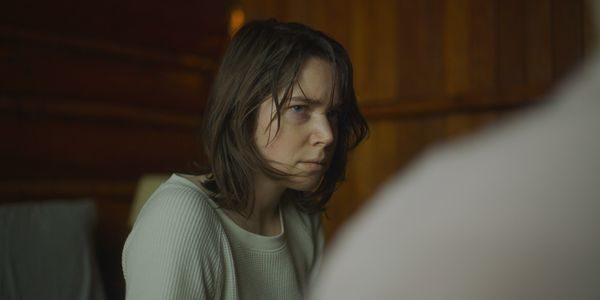
And how’d you find the cabin?
Amelia Moses: It was really hard actually. We looked all over Quebec for three months. And we didn’t have much money either. So we were kind of limited. If you go to places that are more through a film commission or something, those people are expecting a lot of money because that’s what they’re used to, which is totally fine, but we just didn’t have that money. So you just have to look through so many different resources like Airbnb or just friends or anything you find scouring the internet. And we didn’t really have the money to bring much decor furniture in. So it had to be pretty set when we found that cabin. It was a bit of a logistical nightmare, but the place itself was so beautiful and had the right feel. And my production designer just had a huge smile on her face. There’s so much to work within a place that has so much random shit. We really lucked out. Because it’s a cliche, but it is a character unto itself.
When you’re watching the film, you really aren’t clued into what’s happening. You’re experiencing it with Rowan. Why’d you decide to keep audiences in the dark for the majority of the film?
Amelia Moses: I knew I wanted to tell the story through one person’s perspective and deal with an unreliable narrator. And the film is about lots of different things, but one of the initial things I wanted to explore was the way we project narratives onto other people. And with our friends and family, and so it’s the same way that Rowan idealizes Emily. She has the perfect relationship and she’s obviously happy, and she has it all. Obviously, that’s not true. That’s never true. But we can project that narrative onto other people if we’re not happy with our own lives. So then I wanted to take that and twist it. So by the same token, what if you thought something really awful about your friend? Do they even really like me? That’s why I wanted to keep it from Rowan’s perspective.
And how did you get the rabbit? It’s such a disturbing image and one that stuck into my mind.
Amelia Moses: I like the imagery of it. And the way it starts Rowan’s mistrust. It’s obviously disturbing to see but it ruins the way she sees Emily. So it creates more in her own brain. We thought about building fake rabbits. But fake animals never really look good. They’re also really expensive. My production designer was very worried about that. So then we were trying to look into a butcher shop for something that might have skinned rabbits or something and then, in the end, she went to a local farm in a small town in Quebec. It’s weird. And that was a really intense day because me and the production designer went out that morning and hung them all up just the two of us. It was really hard to do. And I’m not a fan of dead animals, but it’s my own fault because I wrote the script, but the tone on the set was weird that day because it was a pretty nasty thing.
And when you’re working with these weird or disturbing images and horror, how is it working with these actors? Are you hoping people will be comfortable with it or having to coax them into the scenes once you’re on set?
Amelia Moses: In the short that we did, Lee’s body had to be completely covered head to toe in gelatin and she was in that for seven hours. So she’d been very prepped for any of that stuff. I knew she was a trooper. And then I ended up just being lucky because Lauren fucking commits and when she had that rabbit by the fire, the skinned one, she was going for it, and she doesn’t hold back with that stuff. She really, really goes for it. I was lucky to work with people who just go for it in that sense. But then afterward, they’re sticky and you have to make sure they’re okay and all that good stuff.

Do you personally like watching those types of images in movies?
Amelia Moses: Like gross stuff? Yes, for sure. I guess I just like the visceral nature of things like that. And just practical effects in general. I’m a huge fan of David Cronenberg and how it becomes its own aesthetic because it’s not necessarily about realism. It’s about a feeling and an aesthetic. I guess there is a fine line between just writing them in for the fun of it versus making sense within the film.
Why do you think you are drawn to these types of characters and themes? And you keep returning to them?
Amelia Moses: It’s interesting to explore a more heightened way of the things that you felt yourself, which are maybe not the easiest to talk about. I have a lot of anxiety in my life. And so I feel like that’s something interesting to explore on screen because also for women, it’s kind of rarely talked about. There is so much emphasis on strong female leads as a buzzword, and I totally think there’s obviously room for that. But I think women are as complex and human and flawed as men are. Why can’t we look at that, too? And look at women who do have those flaws and who are struggling with those things? Because those are things that I have felt as well in my life. And I’m taking them into a much more heightened cinematic space, but it’s still coming from somewhere personal. I guess it’s a way to look at stuff in my own life or things I’ve observed from other people or whatever. Now, this is a therapy.
There’s an idea of liking people versus actually needing people that are embedded in the film. Can you speak a bit more about that idea?
Amelia Moses: There was actually a scene that was added very late in the game, which was interesting for me as well. I was working with a script consultant. And she was saying “It’s a very classic structure.” But with films with happy endings, you have a down point before the end. But with tragic films, you show a point where maybe everything will be fine. And that’s not what happens. So that was kind of written into the movie, which is where those two scenes came with them in the bed together. And then when they’re sitting by the fire together. But I think because they were added so last minute, they were very easy to write because I knew what the movie was about. So this is almost an opportunity to say it. And I obviously don’t like it when films spell it out. And I think this film doesn’t because it’s so ambiguous. But I’m being a bit more direct in that way of letting the characters speak to those things a bit more. And so I actually really like both those scenes because they’re quite raw and upfront. It was a nice opportunity to really show the dynamic between the two women and the love there and they complement each other. Well, obviously, it’s super fucked up. I guess that was just something that I had seen in my own romantic relationships or friendships. Do I actually like this person? Or is it just like a kind of codependency at this point? Because you might realize that we don’t actually get along, but we’re so used to being together and I think that definitely happens in romantic relationships a lot. At a certain point, you’re just like, “Are we together because that’s just the way it’s always been?”
Film Inquiry would like to thank Amelia Moses for taking the time to speak with us!
Watch Bleed With Me
Does content like this matter to you?
Become a Member and support film journalism. Unlock access to all of Film Inquiry`s great articles. Join a community of like-minded readers who are passionate about cinema – get access to our private members Network, give back to independent filmmakers, and more.
Join now!
